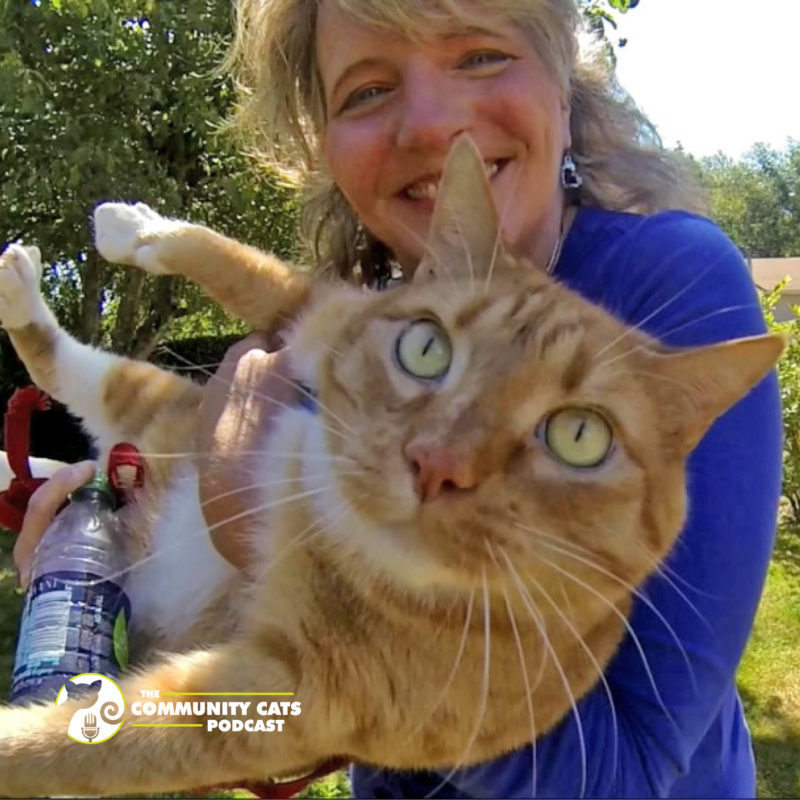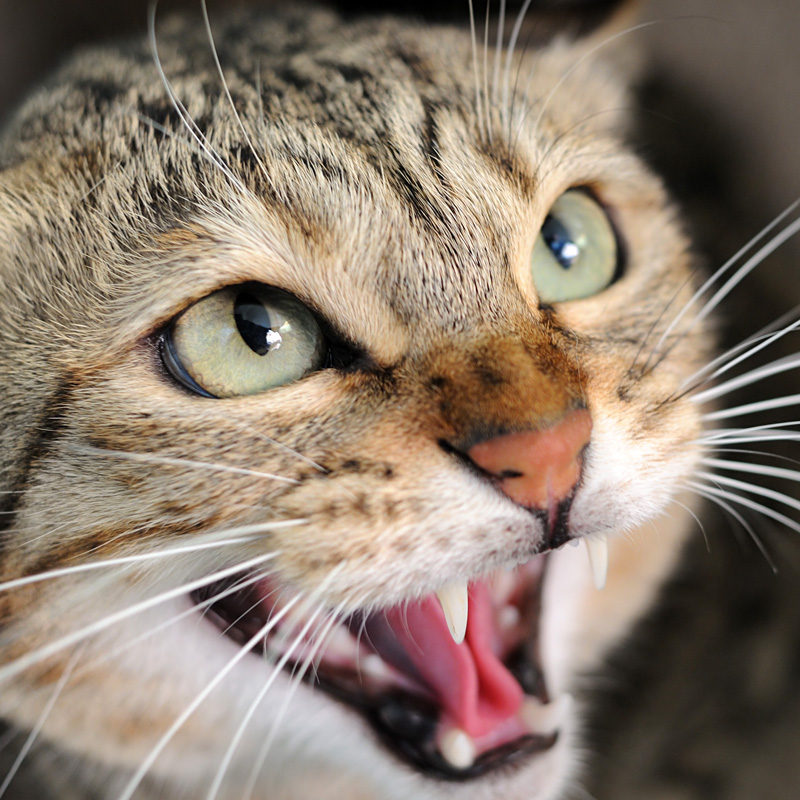
Lost and Found Pets with Kat Albrecht-Thiessen, Pet Detective and Founder/Director of The Missing Animal Response Network
April 5, 2022
Documenting the TNR Experience with Photographer Erica Danger
April 12, 2022
By Allison Hunter-Frederick, Cat Behavior Consultant, Trainer, & Educator at Allison Helps Cats
Like what you’re reading? Catch Allison’s interview with Stacy on Episode #427 of the podcast here.
Survey responses are needed!
If you’ve ever experienced non-recognition aggression as discussed in this blog post, Allison would like to hear from you. Little is known about the topic in the field of feline behavior. Allison is hoping to change that! Read to the end and follow the link to the survey to participate in this important research.
Have you ever had a cat return from the vet or groomer, or even a supervised outing, only to be attacked by one of the cats who remained at home? If so, you have a cat with non-recognition aggression.
The term “non-recognition aggression” refers to what happens when one cat has spent some time outside the home and is viewed as a stranger or threat by a cat who remained at home. Although some simple solutions do exist, they do not always work.
In an informal survey of cat owners that I conducted, 64% of respondents had the most success when they brought the cat with non-recognition aggression along whenever taking another cat outside the home. Other ideas which had some success included rubbing the cat(s) left at home with a clean dry cloth and then rubbing the “away” cat with the same cloth before reintroducing them or separating the two cats for a few days. According to many cat behavior experts, the reasoning behind the latter idea is that this allows the “away” cat to thoroughly groom itself. The theory behind both of these strategies is that it removes or reduces foreign smells.
From my experience with my own cat who has non-recognition aggression, rubbing cats with the same cloth to establish a group scent and/or allowing the returning cat to thoroughly groom themself works reasonably well for routine vet visits, but not for extended stays.
 The fact that 18% of respondents said that it took two weeks or more for their cats to become friends, and 25% said that the relationship between their cats has only been partially restored, suggests I am not the only one for whom the simple solutions have not entirely worked.
The fact that 18% of respondents said that it took two weeks or more for their cats to become friends, and 25% said that the relationship between their cats has only been partially restored, suggests I am not the only one for whom the simple solutions have not entirely worked.
Our family has experimented with other solutions: not allowing the cat at home to see the other cat leave; providing the returning cat with medication and/or treats before and after an outing to minimize stress, and placing bedding on the “home” cat in the carrier of the “away” cat. Sadly, none of these have worked as well as completely reintroducing my cats, a process which includes scent exchange, room swapping, feeding behind closed doors, feeding behind a baby gate, and finally supervising interactions.
Our greatest challenge began this past fall. One of our cats spent two days at the vet, and then 12 days in isolation to recover from her surgery. Although I did exchange scents during that time, I skipped the re-introduction process, based on the idea that the “away” cat would have no foreign smells after so much time had passed. The resulting fight between the two cats proved that theory wrong.
I immediately separated our two cats and began the reintroduction process. Unlike previous attempts, however, this one failed. This time around, it got to the point that even during the reintroduction process Cinder would slink and hide whenever she saw Rainy, and Rainy would growl and lunge whenever she saw Cinder. Could it be that their fight had doomed them, as one cat behavior expert suggested? I don’t think so, as the two have spat before after a vet visit and still returned to being friends.
As a result of our failed experiment, we have had to resort to a slow reintroduction, one that is still in progress three months later. We aren’t sure what is different this time around, but I do have theories. One is that our two cats have mismatched personalities; Cinder’s insecure personality sets her up as “prey.” On the other hand, the cats have always had different personalities, but have previously been able to reconcile after fights. A second idea is that now Cinder has irritable bowel syndrome, she might be less tolerant of Rainy’s interactions with her. Linked to that idea is that Cinder’s medications might make her smell different to Rainy, and so we’ve yet to re-establish the group scent between them.
When I contacted leading cat behavior researchers, they told me that little is known about non-recognition aggression. For this reason, I’m conducting my own informal research with the hope that one day we’ll have better solutions for this all-too-common problem. If you’d like to be part of that research, please fill out this form: https://forms.gle/iZXeWtZxtAUPZKWM7




